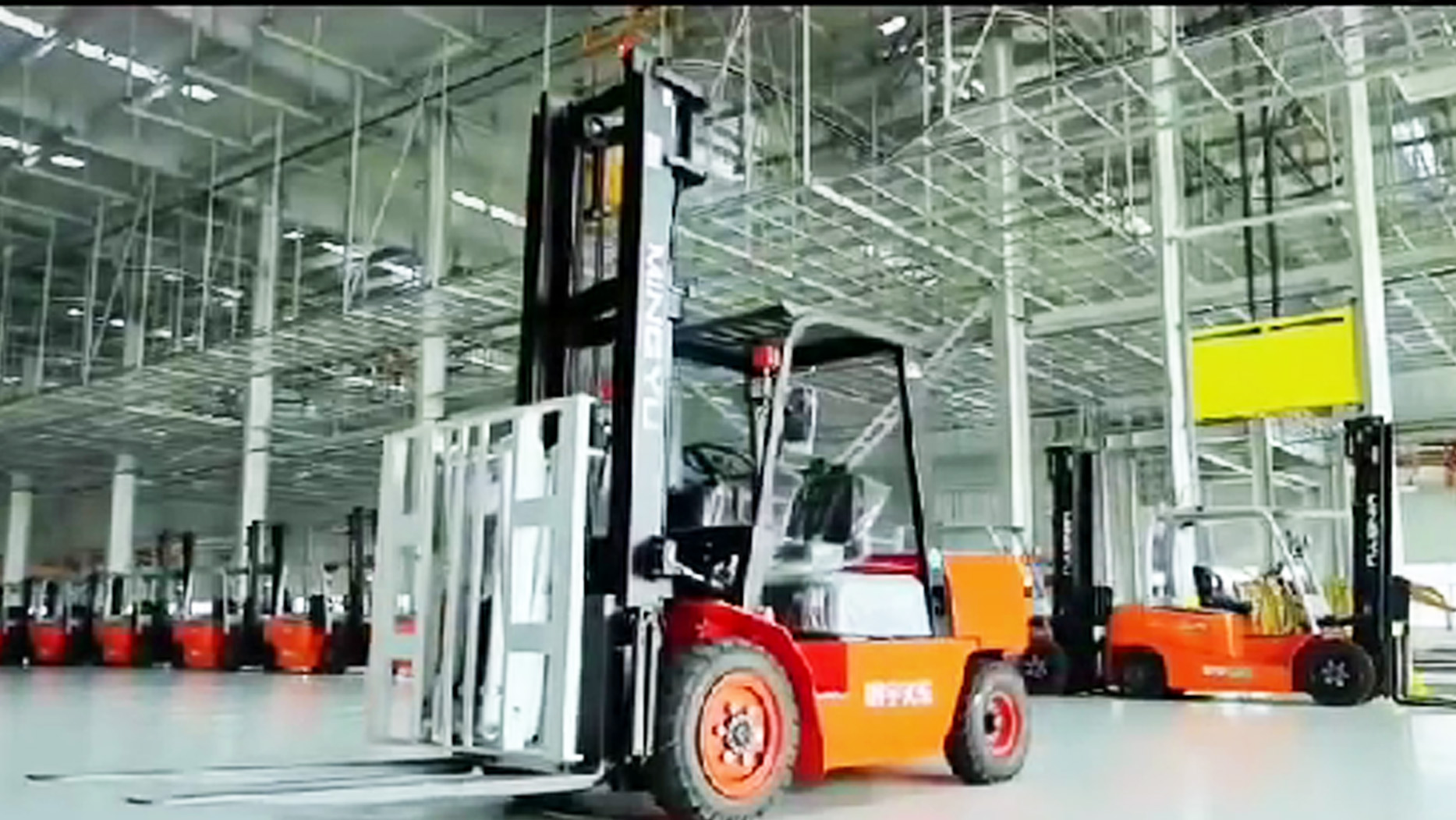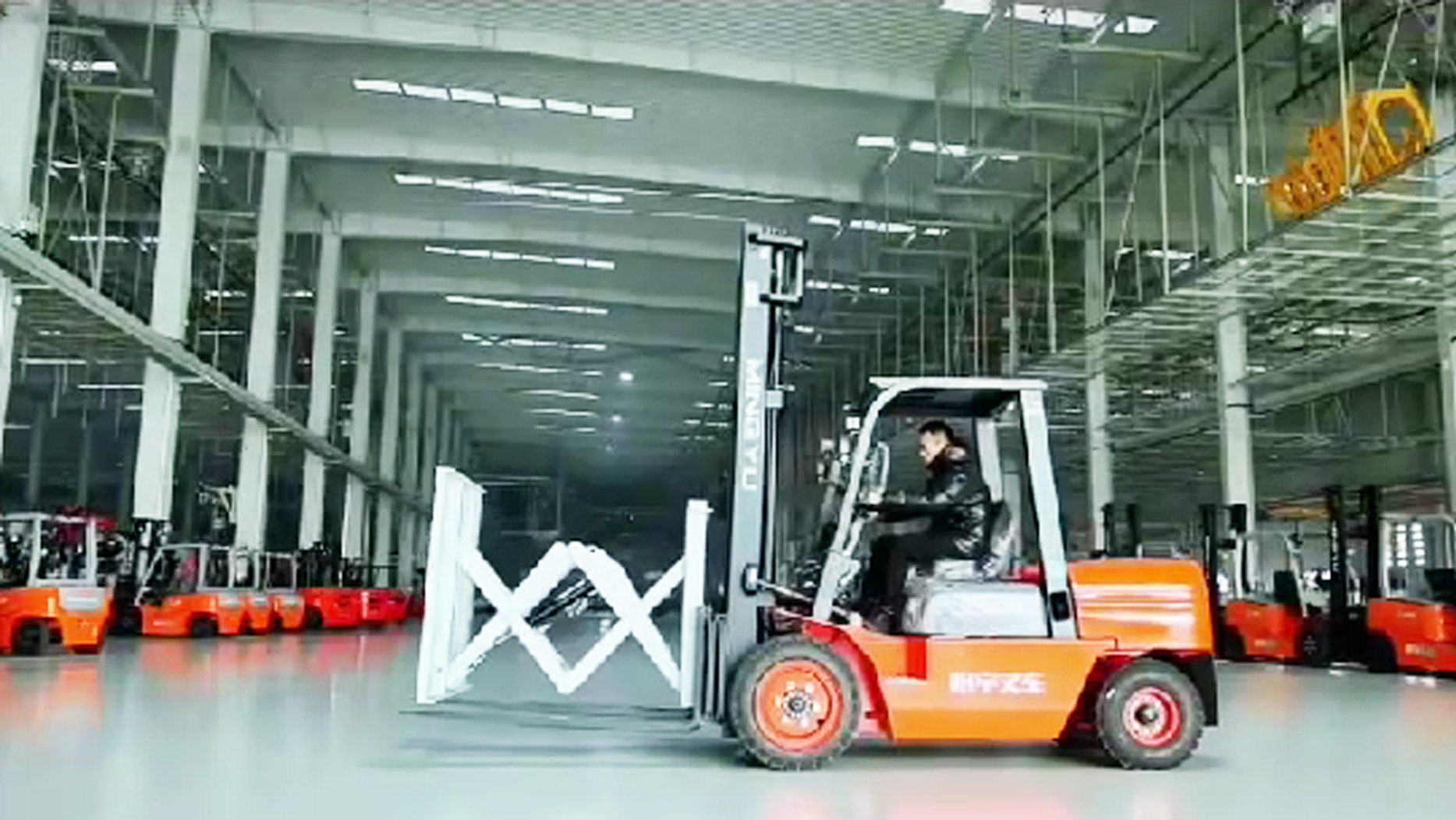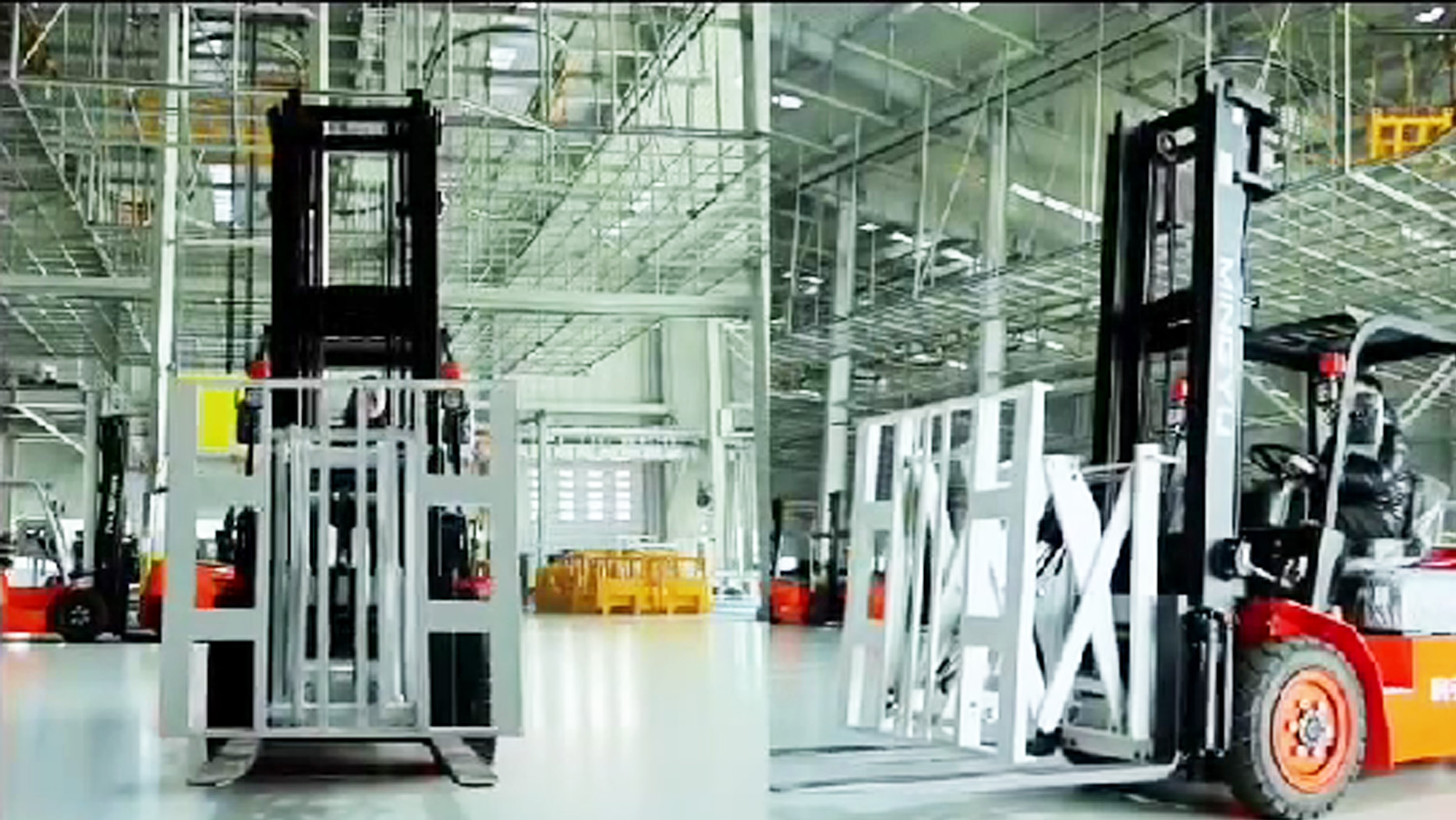I. Introduction
In the dynamic world of material handling, efficiency and safety are paramount. For businesses across diverse sectors – from bustling warehouses and sprawling manufacturing plants to demanding construction sites and intricate logistics operations – the ability to move heavy loads swiftly and securely is fundamental to productivity. When material handling requirements escalate to the 10,000-pound (5-ton) threshold, the selection of the right forklift becomes a critical decision. These robust machines are essential for tasks involving substantial cargo, demanding a careful consideration of power, maneuverability, and application-specific features. For operations that require the power and durability of an internal combustion engine, a forklift diesel option is often preferred. This article serves as your ultimate guide, providing a detailed exploration of the various types of forklifts capable of lifting 10,000 pounds, with specific attention to forklift diesel models, along with a comprehensive analysis of the crucial factors to weigh when making this significant investment. You might also consider diesel forklift hire for short-term needs.
II. Understanding the 10,000 lb Lifting Requirement
Before delving into the specific forklift types, it's crucial to understand the scenarios where a 10,000-pound lifting capacity becomes necessary and the importance of accurate weight assessment.
A. Common Applications for 10,000 lb Loads: The need for a 10,000 lb capacity forklift arises in numerous heavy-duty applications. In manufacturing, these forklifts are often used to handle heavy machinery components, such as engine blocks, large castings, and tooling. The metalworking and steel industries rely on them for moving substantial steel or metal stock, including plates, coils, and beams. Logistics and warehousing operations may require these machines for loading and unloading heavy containers or crates, as well as managing bulky construction materials like concrete blocks, large pipes, and structural timber. Specific industry examples include the automotive sector, where they might move large molds or engine assemblies, and the aerospace industry, where they could handle specialized components or equipment. For many of these demanding outdoor applications, a forklift diesel is the preferred choice due to its power and resilience.
B. Importance of Accurate Weight Assessment: Overloading a forklift is a serious safety hazard that can lead to tipping, load instability, and significant equipment damage. Therefore, accurate weight assessment of the loads to be handled is paramount. It's not enough to simply estimate; precise weighing is essential. Furthermore, understanding load centers – the horizontal distance from the front face of the forks to the center of gravity of the load – is critical. As the load center increases, the forklift's lifting capacity decreases. Always consult the load charts provided by the forklift manufacturer. These charts detail the safe lifting capacity at various lift heights and load centers. Misinterpreting these charts can have severe consequences, especially when dealing with heavy loads on a forklift diesel.
III. Key Types of Forklifts Capable of Lifting 10,000 lbs
Several distinct types of forklifts are engineered to safely and efficiently handle loads up to 10,000 pounds. Each type offers unique advantages and disadvantages depending on the specific application and operating environment. For heavy outdoor lifting, the forklift diesel models often stand out.
A. Internal Combustion (IC) Pneumatic Tire Forklifts: These robust forklifts are powered by internal combustion engines, which can run on diesel, propane/LPG (liquefied petroleum gas), or gasoline. For applications requiring significant power and extended operation, especially outdoors, a diesel forklift is a common selection. Each fuel source has its own set of pros and cons for heavy lifting. Diesel forklifts typically offer high power and fuel efficiency for demanding, continuous outdoor operation, and are often considered among the best diesel forklifts for their durability, but they produce emissions and can be noisier. Propane/LPG provides a cleaner-burning alternative suitable for both indoor and outdoor use with proper ventilation, but fuel storage and exchange can be a consideration. Gasoline engines offer a balance but are less common for this heavy-duty capacity. A key advantage of pneumatic tires is their ability to navigate outdoor and uneven surfaces with better traction and cushioning, making these forklifts, particularly diesel forklift models, ideal for construction sites, lumberyards, and other rough terrain applications. They typically offer varying lifting heights depending on the mast configuration and generally provide good maneuverability for their size. For short-term outdoor projects, diesel forklift hire can be a cost-effective solution. Common manufacturers offering 10,000 lb capacity IC pneumatic tire forklifts include Toyota (e.g., Large IC Counterbalance series), Hyster-Yale (e.g., H100-120FT series, often available as a forklift diesel), and Caterpillar (e.g., GP40-55 series, including forklift diesel options).

B. Internal Combustion (IC) Solid/Cushion Tire Forklifts: In contrast to pneumatic tire models, IC solid/cushion tire forklifts are designed primarily for indoor and smooth surface applications such as warehouses and manufacturing facilities. While forklift diesel models with cushion tires exist for heavy indoor applications, propane or electric options are often preferred due to emissions. Solid or cushion tires, made of solid rubber, offer superior stability on smooth floors and require lower maintenance as they are puncture-proof. While they provide excellent stability for heavy loads, they offer a less comfortable ride on uneven surfaces. Their lifting heights are also variable depending on the mast, and their maneuverability is generally good on smooth, level ground. Similar to pneumatic models, common manufacturers like Toyota (e.g., Large IC Counterbalance with cushion tires, including forklift diesel), Hyster-Yale (e.g., S100-120FT series, with forklift diesel options), and Komatsu (e.g., BX50 series, including forklift diesel) offer 10,000 lb capacity IC forklifts equipped with solid or cushion tires.
C. Electric Rider Forklifts: Driven by batteries, electric rider forklifts offer significant advantages, particularly for indoor applications. They produce zero emissions at the point of operation and operate much quieter than their IC counterparts, making them suitable for environments with strict air quality or noise regulations. While advancements are being made, a fully electric forklift with a consistent 10,000 lb lifting capacity for heavy-duty, continuous outdoor use is less common than a forklift diesel. Technological advancements in battery life and charging have made high-capacity electric forklifts increasingly viable for demanding tasks, though run times and charging cycles still need careful consideration. Their suitability for outdoor applications is generally limited to smooth, paved surfaces. Lifting height and maneuverability for 10,000 lb capacity electric models are comparable to IC forklifts, though the overall size and weight distribution might differ. Key manufacturers in this segment include Crown (e.g., C-5 Series), Raymond (though less common at this exact capacity, some heavy-duty electrics exist), and Hyster-Yale (e.g., J100-120XNL series). While electric options are growing, for consistent 10,000 lb outdoor lifting, a forklift diesel is often considered the best diesel forklift choice.
D. Rough Terrain Forklifts: When the 10,000 lb lifting requirement coincides with uneven and challenging outdoor environments, rough terrain forklifts, often powered by diesel, are the specialized solution. These machines feature robust designs, powerful diesel engines, and large, aggressive pneumatic tires to navigate gravel, dirt, and inclines. Their design prioritizes lifting capacity and stability when handling heavy loads on such demanding terrain. For these applications, a forklift diesel is typically the standard power source. While their primary focus is rough terrain, some models can also operate effectively on paved surfaces. For temporary needs on rough terrain, diesel forklift hire is a common practice. Common manufacturers producing rough terrain forklifts capable of 10,000 lb lifts include JCB (e.g., Teletruk and RTFL series), Manitou (e.g., M Series), and Pettibone (e.g., Cary-Lift series, though often with specialized material handling capabilities beyond standard forks). When considering the best diesel forklift for rough terrain, factors like engine power and tire grip are paramount.
IV. Factors to Consider When Choosing a 10,000 lb Forklift
Selecting the ideal 10,000 lb capacity forklift requires a thorough evaluation of several key factors to ensure optimal performance, safety, and cost-effectiveness. For many heavy outdoor tasks, the decision often comes down to choosing the right forklift diesel model or considering diesel forklift hire.
A. Operating Environment (Indoor vs. Outdoor): The primary operating environment is a crucial determinant of forklift type and tire selection. Surface conditions dictate whether pneumatic tires (common for diesel forklift use outdoors) for uneven terrain or solid/cushion tires for smooth surfaces are more appropriate. Ventilation requirements are a significant consideration for forklift diesel models operating indoors to manage exhaust fumes. Space constraints within the work area will influence the required turning radius and overall size of the forklift, regardless of the power source.
B. Lifting Height and Reach Requirements: Understanding the maximum lifting height needed to access racking systems or stacking areas is essential for selecting the correct mast configuration. It's also important to consider how the load center affects the actual lifting capacity at maximum height. Any specific reach requirements for loading or unloading trucks or reaching over obstacles may necessitate specialized attachments or forklift designs, whether it's a forklift diesel or another type.
C. Fuel/Power Source Preferences and Infrastructure: The choice of fuel or power source involves evaluating several factors. The cost of fuel (diesel, propane, gasoline) versus electricity over the long term is a significant consideration. For heavy outdoor use, the power and uptime of a forklift diesel often outweigh other factors. The availability of propane or natural gas on-site can influence the feasibility of IC propane forklifts. For electric forklifts, the necessary charging infrastructure and the logistics of battery management (charging times, battery swapping) need careful planning. Emissions regulations and the company's environmental considerations may favor electric models in certain areas or industries, but for raw power in heavy lifting, forklift diesel often excels. When considering diesel forklift hire, fuel availability on the job site is a key logistical point.
D. Usage Frequency and Intensity: The frequency and intensity of use will impact the optimal choice. For occasional use, a less expensive IC model (perhaps even considering diesel forklift hire) might suffice. However, for continuous heavy-duty operation, the durability and fuel efficiency of a diesel forklift or a high-capacity electric model with good battery life will be more critical. High usage can also affect battery life in electric forklifts and fuel consumption in IC models. The maintenance requirements for different power sources (e.g., engine maintenance for a forklift diesel vs. battery maintenance for electric) should also be factored in. The best diesel forklift models are known for their robust performance under intense use.
E. Budget (Initial Purchase vs. Total Cost of Ownership): The initial purchase price of a 10,000 lb capacity forklift can vary significantly between IC (including forklift diesel) and electric models, with electric often having a higher upfront cost. However, the total cost of ownership over the forklift's lifespan needs to be considered, including fuel/electricity costs, maintenance costs (which can differ between engine-based for a forklift diesel and battery-based systems), and potential repair expenses. Some regions may offer tax incentives or rebates for purchasing electric vehicles, including forklifts, which can help offset the initial cost. For short-term projects, diesel forklift hire avoids the initial purchase cost altogether.
F. Operator Comfort and Safety Features: Ensuring operator comfort through ergonomic design, adjustable seating, and intuitive controls can improve productivity and reduce fatigue, regardless of whether it's a forklift diesel or another type. Visibility is paramount for safe operation, so consider models with clear sight lines. Essential safety systems include lights, alarms, and backup indicators. Advanced features like stability control systems and load sensing technologies can further enhance safety when handling heavy loads, particularly important with the power of a forklift diesel.
V. Key Specifications to Evaluate for a 10,000 lb Forklift
When comparing specific 10,000 lb capacity forklift models, including forklift diesel options, several key specifications should be carefully evaluated:
Rated Capacity and Load Center
Maximum Lift Height
Travel Speed (Loaded and Unloaded)
Turning Radius
Gradeability (especially important for forklift diesel models used outdoors)
Tire Type and Size (consider pneumatic for most forklift diesel applications)
Power Source and Battery/Fuel Tank Capacity (larger fuel tanks are typical for forklift diesel)
VI. Popular Manufacturers and Models in the 10,000 lb Capacity Range
Several reputable manufacturers offer reliable forklifts capable of lifting 10,000 pounds, with many offering robust forklift diesel options. Some key manufacturers known for this capacity include Toyota (e.g., 8-Series Large IC Counterbalance, often available as a forklift diesel), Hyster-Yale (under both Hyster and Yale brands, e.g., H100-120FT, GLP/GDP100-120VX, with strong forklift diesel offerings), Crown (e.g., C-5 Series 5500, also offering forklift diesel models), Komatsu (e.g., BX50 Series, including forklift diesel), and Mitsubishi (e.g., GRENDiA EX FG/FD40-55N, with forklift diesel variants). When looking for the best diesel forklift, these manufacturers are often top contenders. For temporary needs, checking their diesel forklift hire options might be beneficial. Specific popular models within these ranges often offer various configurations and features to suit different applications.
VII. Conclusion
Choosing the right forklift to lift 10,000 pounds is a critical decision that requires a careful balance of power, maneuverability, safety, and cost-effectiveness. For many heavy-duty outdoor applications, a forklift diesel provides the necessary power and endurance. Whether purchasing or considering diesel forklift hire, thoroughly evaluating your specific needs and operating environment, understanding the key forklift types capable of this capacity (with a focus on forklift diesel when appropriate), and carefully considering the various influencing factors will lead to an informed selection. Prioritizing safety, efficiency, and long-term value will ensure that your investment, or rental agreement, for a 10,000 lb forklift contributes positively to your operations. When seeking the best diesel forklift, consider factors like engine reliability, fuel efficiency, and operator comfort.
Post time:Apr.08.2025


